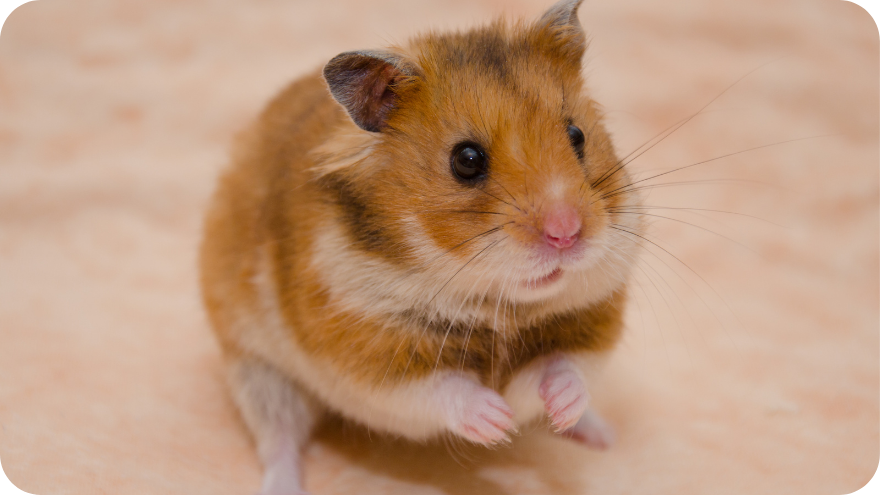
Hamster Care: An In-Depth Guide to Becoming a Hamster Owner
A hamster is a great pet for people who want to have something that they can take with them anywhere but are not looking for anything too large or too complicated.
They’re also perfect pets if you live in a small flat (or dorm room). But before you get one, there are some important things to consider about hamster care – and this guide will show you everything you need to know, providing you with vital pet hamster information.
First things first, get a hamster
Which type of hamster is best for you?
When it comes to hamsters, there are many different types. Some may seem like the best type for you, but others might be better suited to your needs and lifestyle.
Hamsters have various characteristics that make some more suitable than others depending on what kind of person they’re designed for – do you want a furry friend or one with long hair?
Do you need an animal who is active during the daytime or at night-time hours only?
The answer will depend largely on which type of life circumstances we can assume our reader has in order to find out if any particular species fits their personality traits accordingly.
Syrian Hamsters

Syrian hamsters are typically the largest breed of pet hamsters and they can be really fun to watch. These animals should always live by themselves because their territorial nature means that it is difficult for them to get along with other types of hamsters.
Syrian Hamsters have a lively personality which makes training these little creatures easier if you start early on in life when they’re still small. They tend to need less exercise than dwarfs so taking care of one shouldn’t feel like such an uphill battle!
Syrian hamsters live for 2 to 2.5 years on average, but some can live longer. The average size of a Syrian hamster is 5.5 inches.
They are popular with people who are new at owning hamsters and younger children because they are easier to handle and tame than other types of hamsters.
Dwarf Hamsters
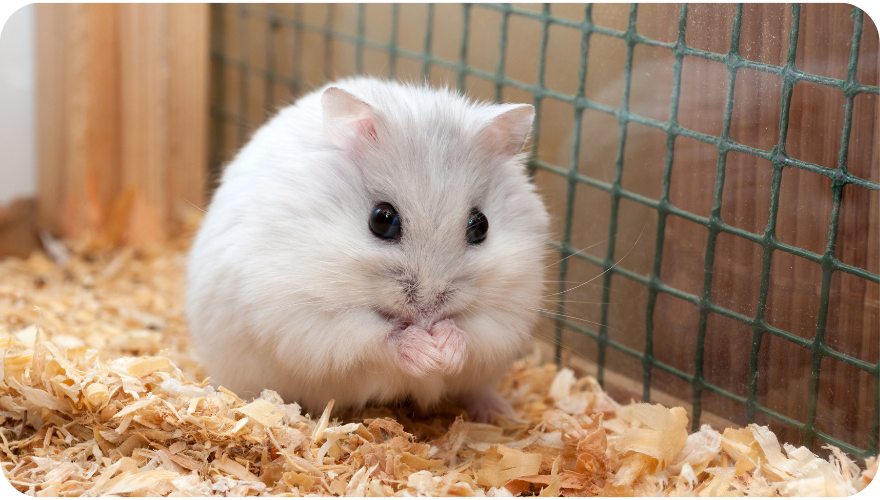
Dwarf hamsters are one the smallest breeds of the species. They have a life span of about 2-3 years, and come in many colours like albino, black, brown, chocolate, and more!
Dwarf hamsters are very social animals that love to play with their owners or other pets. These furry friends can be a great addition to any family as they are easy to care for.
Roborovski
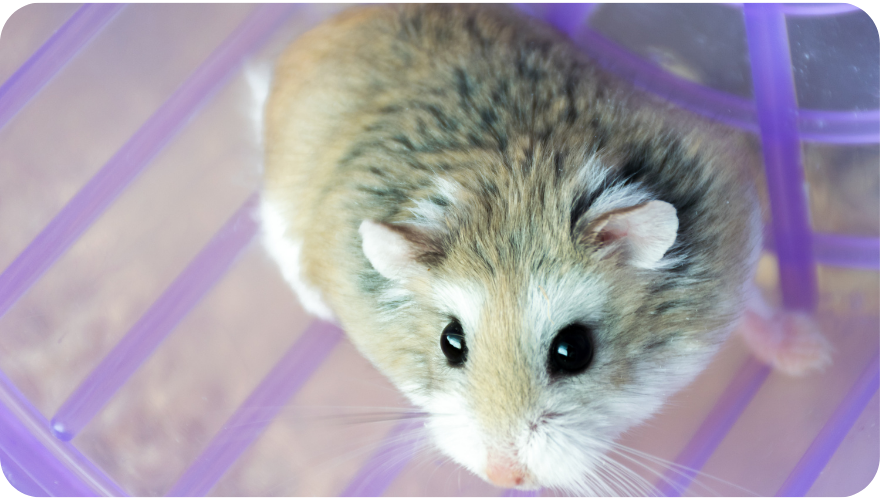
Roborovski dwarf hamsters, or Robo hamsters for short, are a type of small-sized hamster that can make great pets. They’re very energetic and love to run around in their wheel.
They also like to explore their surroundings so be prepared to provide them with lots of space. Unlike other types of hamsters, they don’t live in large groups but instead, prefer solitude and the company of just one other Robo.
Winter White Hamsters

Winter White hamsters are one of the most popular types due to their beautiful white coat. They get this name from turning pure snow-white when living in winters but stay dark grey during captivity with artificial heat and lighting.
Winter Whites can also come in a variety of other colours including marbled, sapphire pearl, or even sapphire pearls. These cute little rodents have an average lifespan of 1-2 years if they live with proper care.
One of the best features about Winter Whites is that they have a high level of resistance to many illnesses. They are also relatively easy to care for and feed, needing only small amounts per day.
However, this type of hamster does get larger than others so it’s important not to overcrowd their living space which could lead them to become territorial.
Campbell’s Dwarf Hamsters
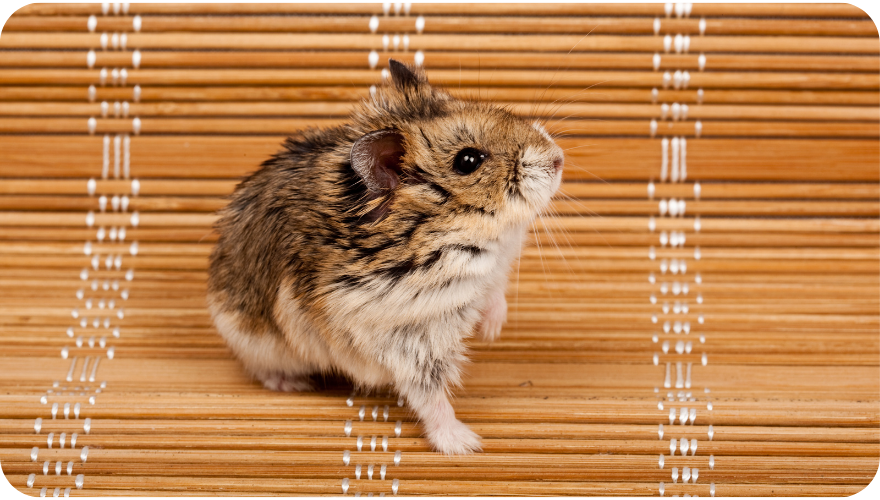
Campbell’s dwarf hamsters are a popular choice for pet owners, as they can be found in many common pet shops. In the wild Campbell’s Dwarf Hamster is most commonly seen in Central Asia (including China and Russia).
They have dark grey fur that resembles their winter-white counterparts. These pets live for an average of 2 years, which is about as long as their wild relatives.
Chinese Dwarf Hamsters
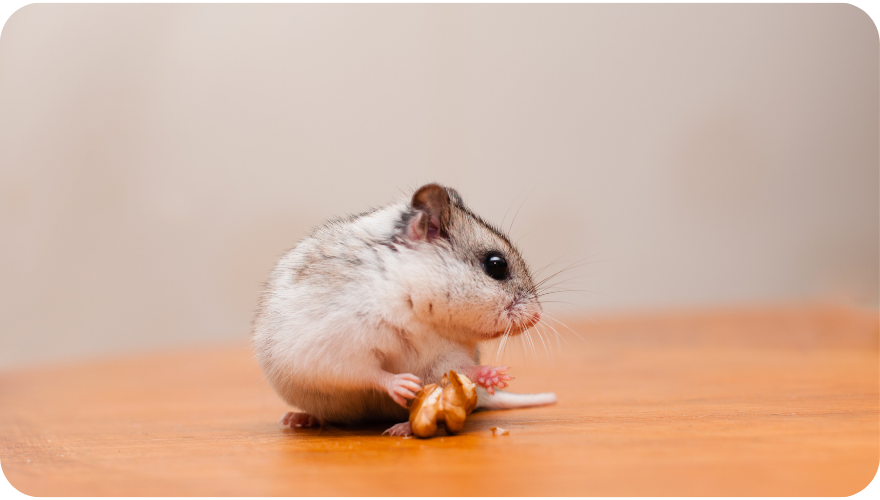
The Chinese hamster, or rock rat as they are known to some, is a nocturnal rodent that can be found in the deserts of northern China and Mongolia. Unlike most other hamsters whose tails are stubby by comparison, these rodents have long ones which allow them to glide across their sandy habitat with ease.
They are nocturnal creatures and spend many hours sleeping during daylight hours but will wake up for short periods throughout each day.
A Chinese dwarf hamster has a lifespan of 1.5-2 years and is often mistaken for other types because of its small size, dorsal stripe, and similar living habits to the more popular Winter White or Campbells Dwarf Hamsters.
As a pet owner, you should know that there are many different varieties of dwarf hamsters. One must be careful when choosing which one to take home because each variety has its own unique features and qualities!
Winter Whites and Campbell’s generally make the best pets as they are easier to train than other types.
Buy a hamster cage that is the right size for your pet
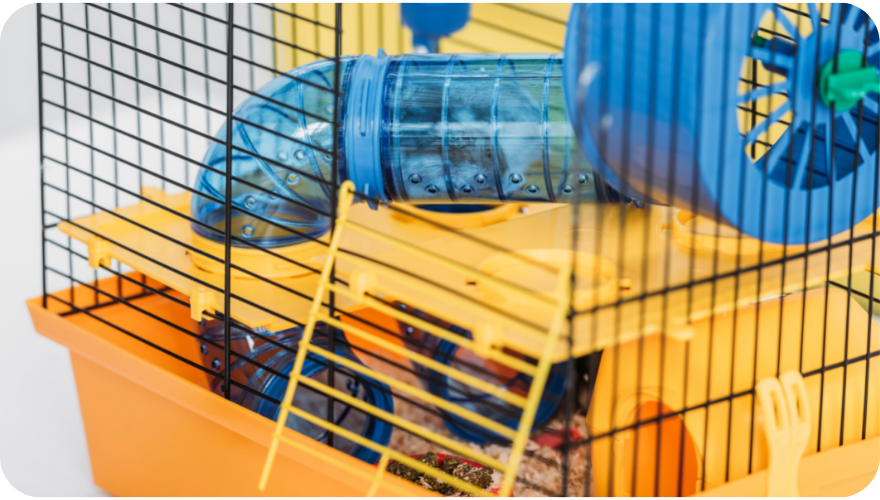
The first step to buying a hamster cage is figuring out what size cage you need. This will depend on the type of hamster that you have, as well as how much space they need to move around and run.
Some people choose to buy large cages for their pets while others prefer smaller ones so that it’s easier to clean.
Some cages come with various accessories such as water bottles, feeders, and play tubes. You should also consider how much money you want to spend on a cage that will be home for your furry friend.
- Make sure that the bars are not too small and they are spaced far enough apart so your pet can’t escape
- Choose a cage with a solid bottom instead of wire mesh as this is more comfortable and easier on their feet
- Get some toys that will keep your furry friend occupied while they’re in their cage
- Buy bedding made specifically for pets or use newspaper – never use cedar chips because they contain oils that could irritate your pet’s skin
Consider what type of food you want to feed your hamster, and how often it should be fed

Hamsters are omnivorous creatures, just like humans. This means that they eat a variety of things – as long as it is a plant or meat-based food.
One type of hamster food which mimics the natural diet for these animals is made up primarily of seeds and grains mixed with supplements to ensure their well-being.
These types should be chosen over brightly coloured varieties containing additives such as sugar and artificial colours because those can lead to health problems in your pet’s future days ahead.
- Hamsters should eat about 2-4 tablespoons of food each day, and seed mixes are a great option
- You should give your hamster fresh water every day – the best type is bottled water
- Never give your hamster fried foods because they are bad for them. They have no healthy parts and make the hamster sick
- Hamsters need a lot of protein so make sure you feed them with foods high in protein
- You can also give your hamster some fresh vegetables and fruits like apples, bananas, blueberries, strawberries, or oranges
- Feed your hamster nuts such as almonds or walnuts but don’t give him too much because they are high in calories
- Avoid giving your pet any food that has sugar in it because this will cause obesity and diabetes
Make sure you have enough bedding material in the cage
Bedding Material for Your Hamster
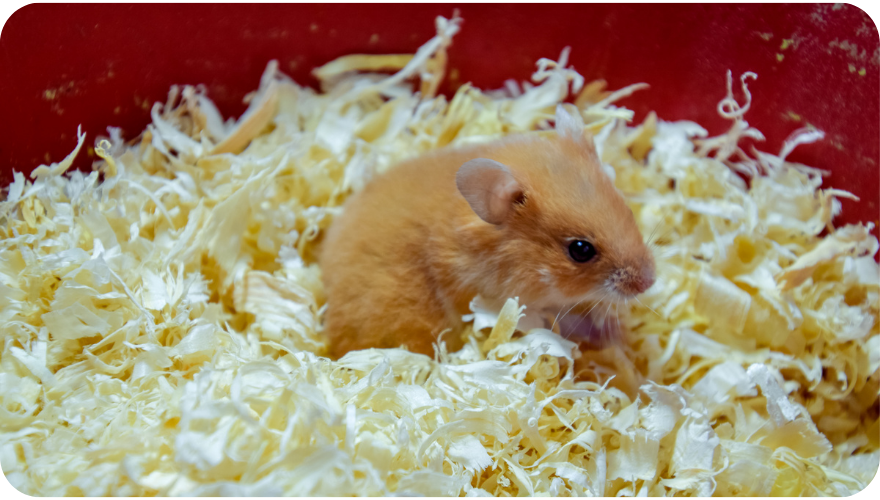
If you are looking for bedding material for your hamster, there are a few things to consider. There is no specific type of bedding that is better than others; the best option depends on what suits your pet’s needs.
Some people use “reusable” options such as old newspapers or recycled paper towels. Other people prefer to buy disposable bedding with all-natural and safe ingredients like corn cobs, wood shavings, or hay.
You should also consider how much time you want to spend cleaning the cage – if it’s just once a week then reusable materials might be more practical, but if it’s every day then disposables would be most convenient for you!
The best option is shredded paper. Paper absorbs moisture and urine better than other materials like shavings or hay which can be dusty and might cause respiratory problems.
Avoid using blankets as this could lead to suffocation when it’s rolled up into a ball by your hamster.
Keep Your Hamster’s Cage Clean
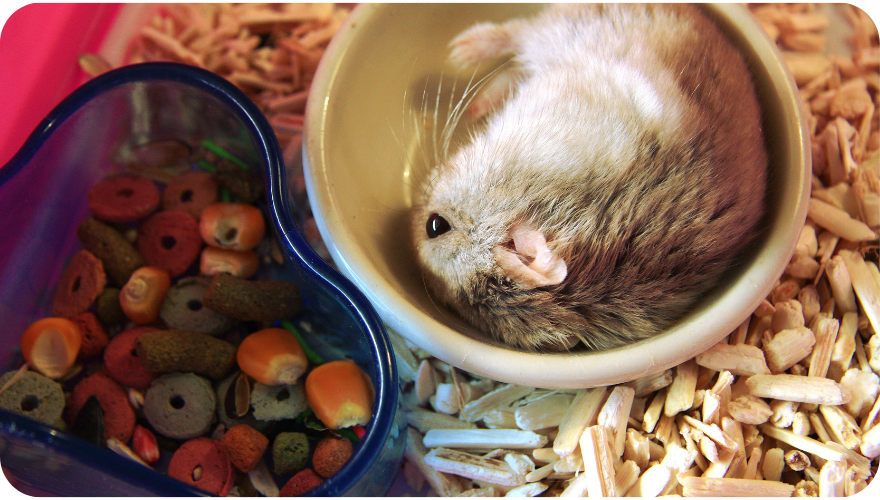
You need to keep your hamster’s cage clean in order to make sure they are happy and healthy. You should wipe down the floors of their enclosure regularly using a damp cloth or paper towel, as well as change out bedding every few days.
Clearing away old food crumbs can also be helpful for preventing any bacteria from accumulating on floor surfaces; this is because these containers often contain decaying organic matter that will release ammonia gas if not cleaned up soon enough.
Get an exercise wheel to help keep your hamster healthy and happy

The wheel is a very important part of keeping your hamster healthy. It provides exercise and the opportunity to run around, which they love.
An exercise wheel for your pet can be an excellent way of ensuring that you keep them happy and healthy as well by providing both physical activity and mental stimulation at the same time.
A bored or unhealthy animal isn’t going to feel good about themselves.
Exercise wheels are generally made from wire mesh with either an axle for support or they can have spokes that provide traction. They should be at least eight inches in diameter and mounted securely so your pet does not get injured while hopping on them.
One great way to enrich your hamster’s life is by giving them a chance outside of the cage by putting them inside a hamster ball.
Hamsters are a delight to have as pets, but they can’t be expected to run on their wheel all day. Hamster balls provide your furry friend with the opportunity for some fun and exercise!
They will enjoy it in addition to running around inside of your home when given the chance.
Remember that hamsters need plenty of water available at all times – make sure they always have fresh water in their bottle.
Many people think it is great that their hamsters can drink from the tap, but this may not be good for your pet. Tap water high in chlorine or other chemicals will make its fur fall out and give him diarrhoea.
In areas with bad tap water, you should offer filtered water to drink instead; otherwise, he might get sick.
What can you do if your hamster is ill?

If you’re worried that your pet hamster is not feeling well, there are a variety of symptoms to look out for. Watch carefully for any signs of lethargy or lack thereof in their movements.
Do they eat normally? Look around at the cage and see if anything has changed – such as nesting material being tossed about or food containers tipped over (either intentionally by them or accidentally).
Smaller poop pellets might also indicate difficulty with digestion and/or constipation as well as other stomach issues like ulcers or cancerous growths (depending on age).
A lack of movement can point towards muscle deterioration.
You might also notice whether they have lost weight recently, which could be an indication that something inside isn’t right either with themselves internally OR externally on their skin surface; these conditions can both lead to health problems so consult a vet immediately.
Conclusion
Hamsters are wonderful pets that can provide hours of entertainment for children and adults alike. However, they require a lot of time and attention to be happy in their new home.
It’s important to make sure you have the right space for your pet before deciding on this type of animal as well as understand how much work will need to go into caring for them every day.